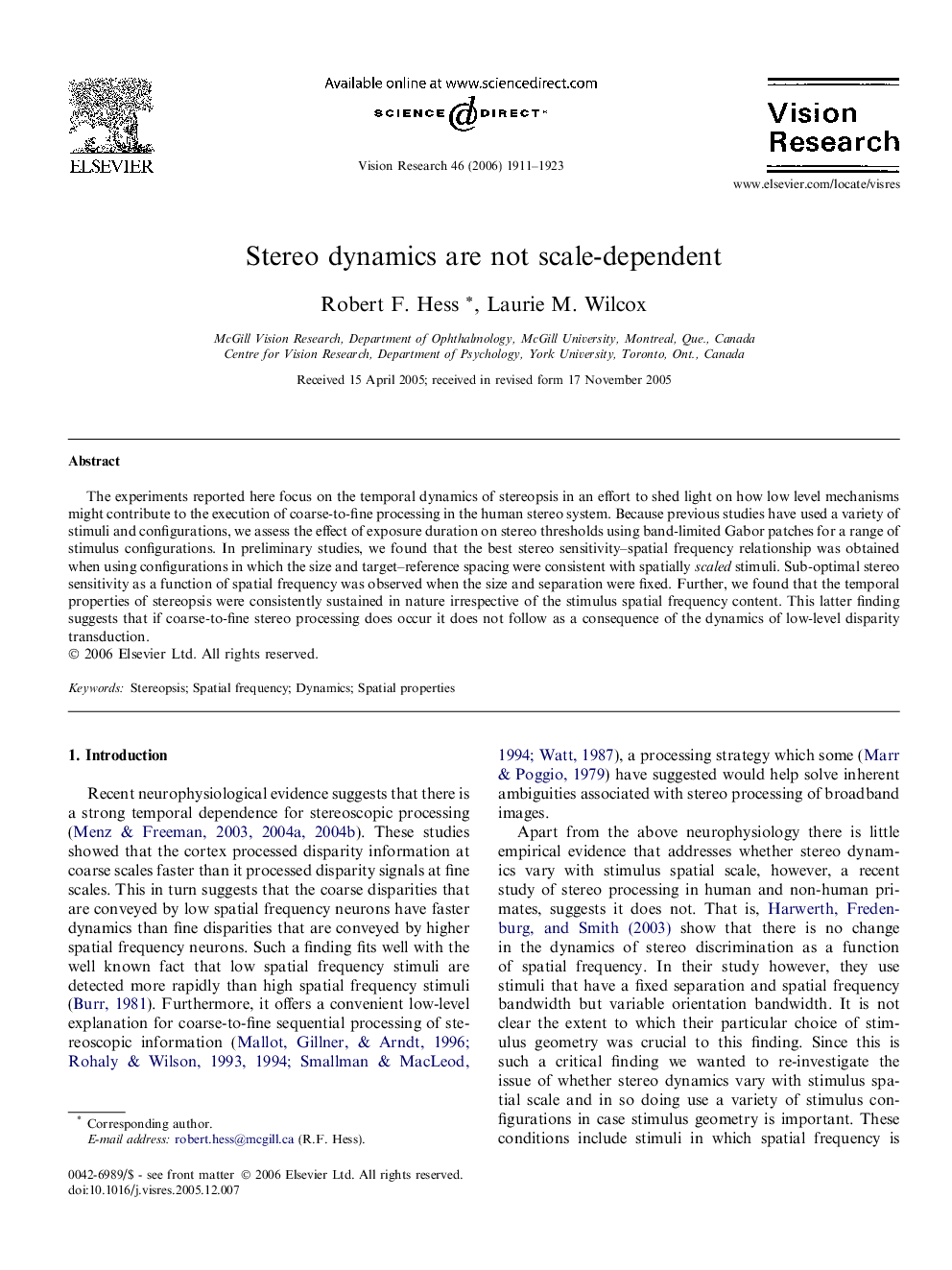| Article ID | Journal | Published Year | Pages | File Type |
|---|---|---|---|---|
| 4036283 | Vision Research | 2006 | 13 Pages |
The experiments reported here focus on the temporal dynamics of stereopsis in an effort to shed light on how low level mechanisms might contribute to the execution of coarse-to-fine processing in the human stereo system. Because previous studies have used a variety of stimuli and configurations, we assess the effect of exposure duration on stereo thresholds using band-limited Gabor patches for a range of stimulus configurations. In preliminary studies, we found that the best stereo sensitivity–spatial frequency relationship was obtained when using configurations in which the size and target–reference spacing were consistent with spatially scaled stimuli. Sub-optimal stereo sensitivity as a function of spatial frequency was observed when the size and separation were fixed. Further, we found that the temporal properties of stereopsis were consistently sustained in nature irrespective of the stimulus spatial frequency content. This latter finding suggests that if coarse-to-fine stereo processing does occur it does not follow as a consequence of the dynamics of low-level disparity transduction.
